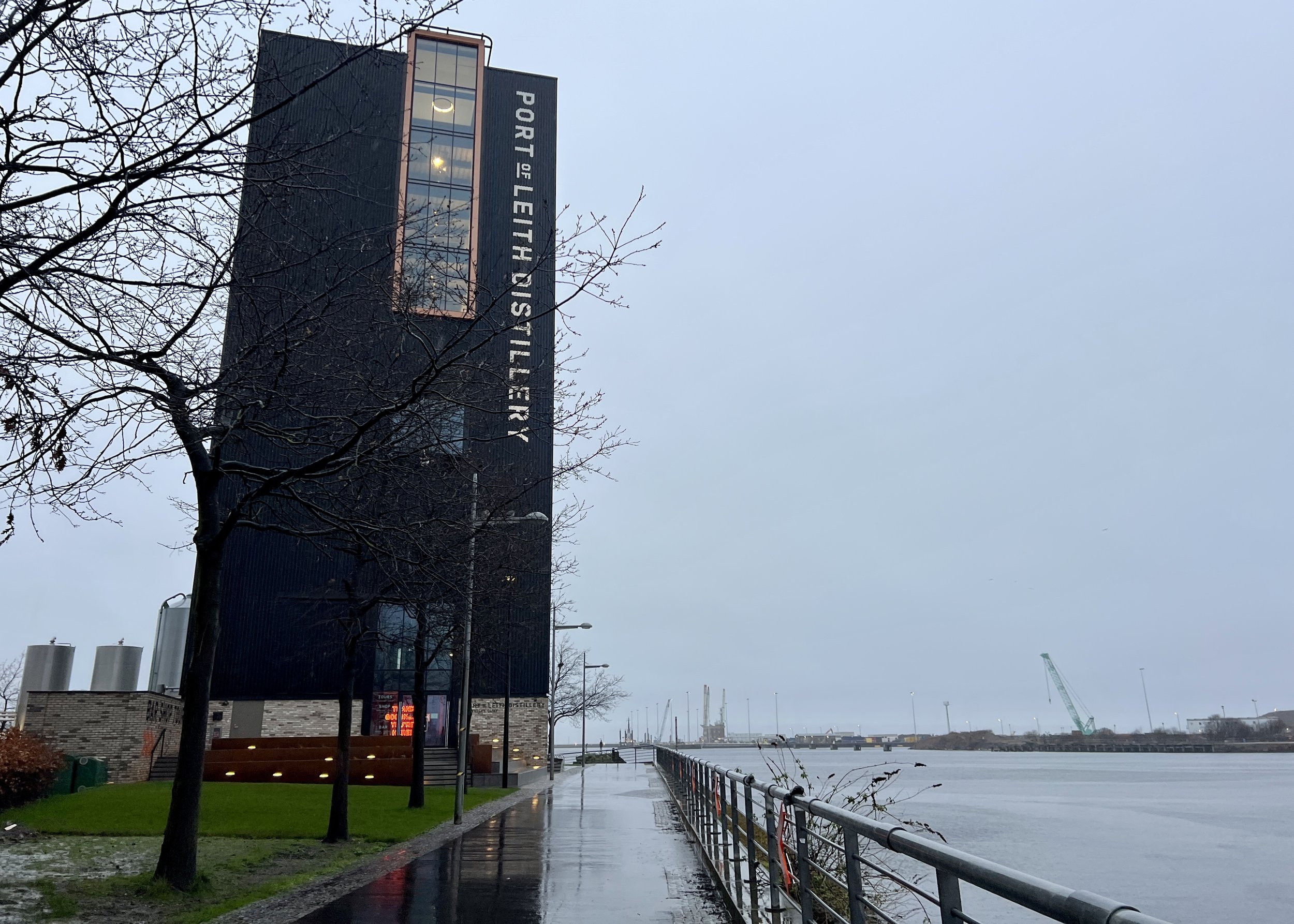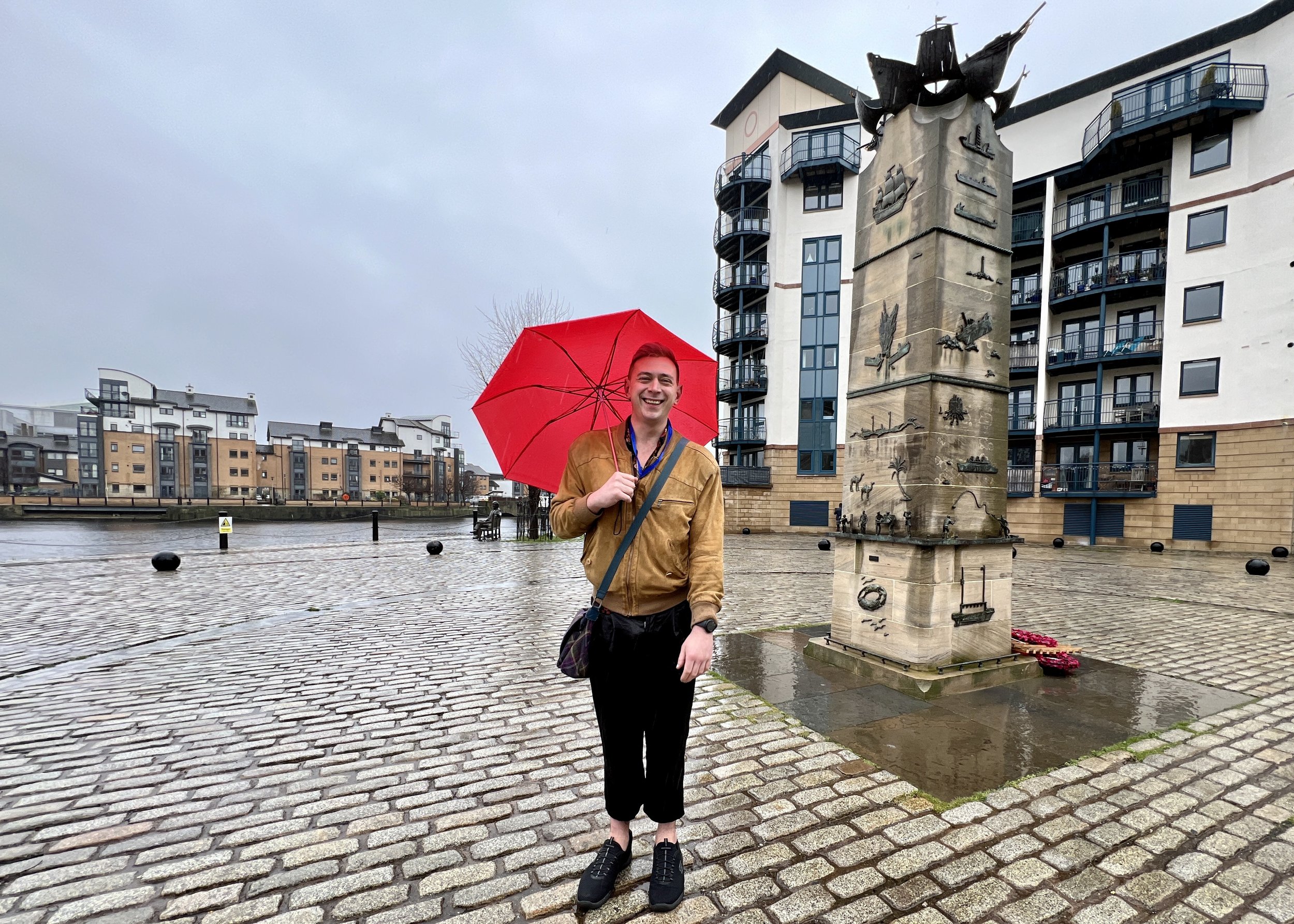Two Nights in Edinburgh, Scotland
Published March 22, 2024
Photography by Jennifer Bain unless otherwise noted.
Port Of Leith Distillery CREDIT Sam Christie
Rising out of the misty rain on a gloomy afternoon in Edinburgh’s port district of Leith, the UK’s only vertical distillery is a fetchingly slim and modern black tower that stretches up nine storeys.
The Port of Leith Distillery just opened in October with grand plans to be part of the new wave of Scotch whisky distillers and become a landmark tourist attraction.
“A distillery that reaches for the sky,” is how Threesixty Architecture describes the eye-catching building that’s nearly 40-metres high.
Port of Leith Distillery ground level welcome sign
It’s pouring when I dash inside to have lunch and wait for a tour, so I don’t spend much time ogling the exterior but love being greeted by the neon orange “thank goodness you’re here” sign instead of a human.
An elevator whisks me to an eighth-floor bar with sweeping views of not just of Edinburgh and Fife, but of the Royal Yacht Britannia and the Ocean Terminal shopping centre, which is demolishing its carpark, planning a much-needed facelift and creating a pedestrian-centred waterfront with shops, businesses and homes.
Yes, this northerly part of Edinburgh — famed for its Trainspotting connections — is a neighbourhood to watch.
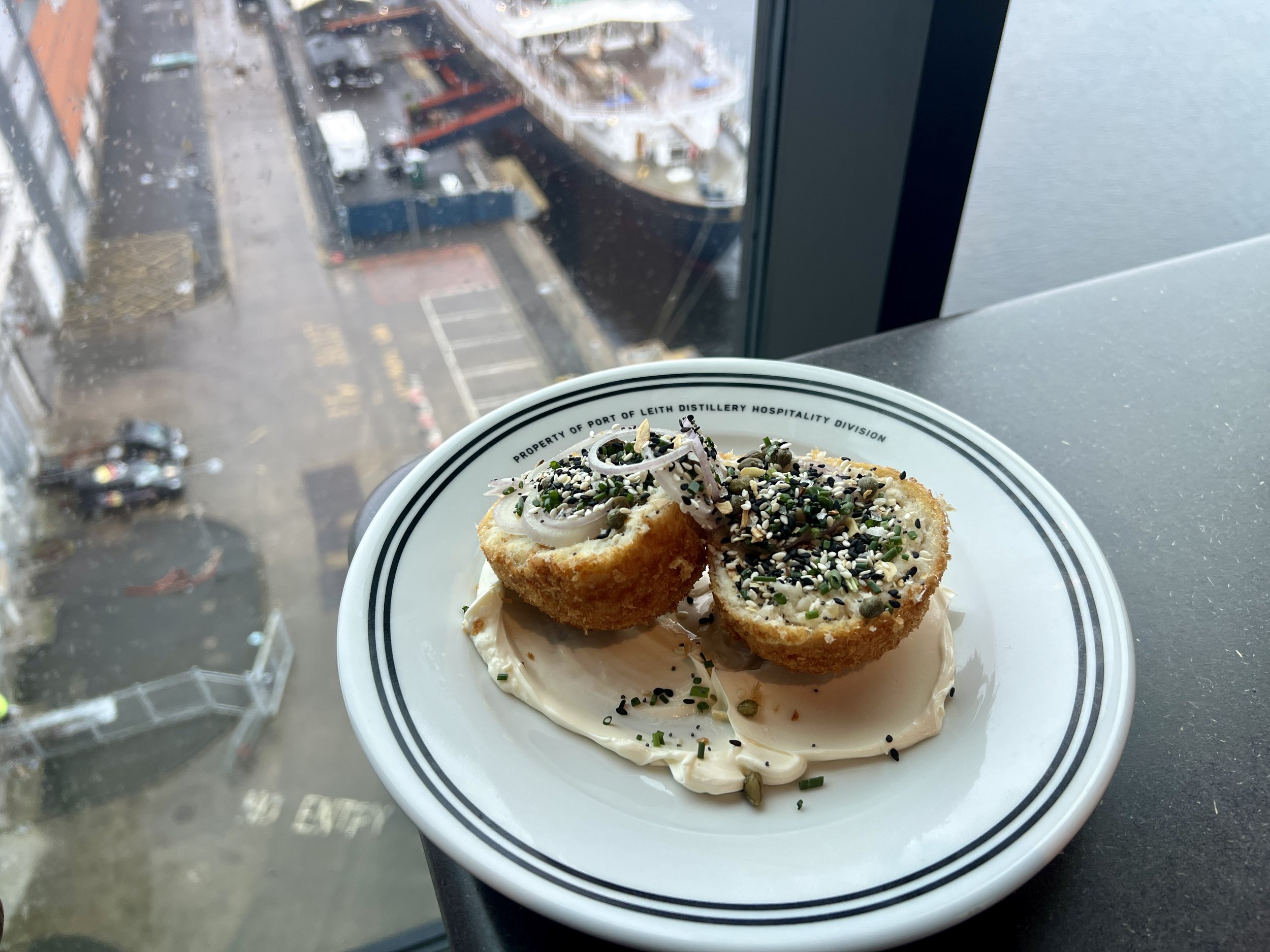
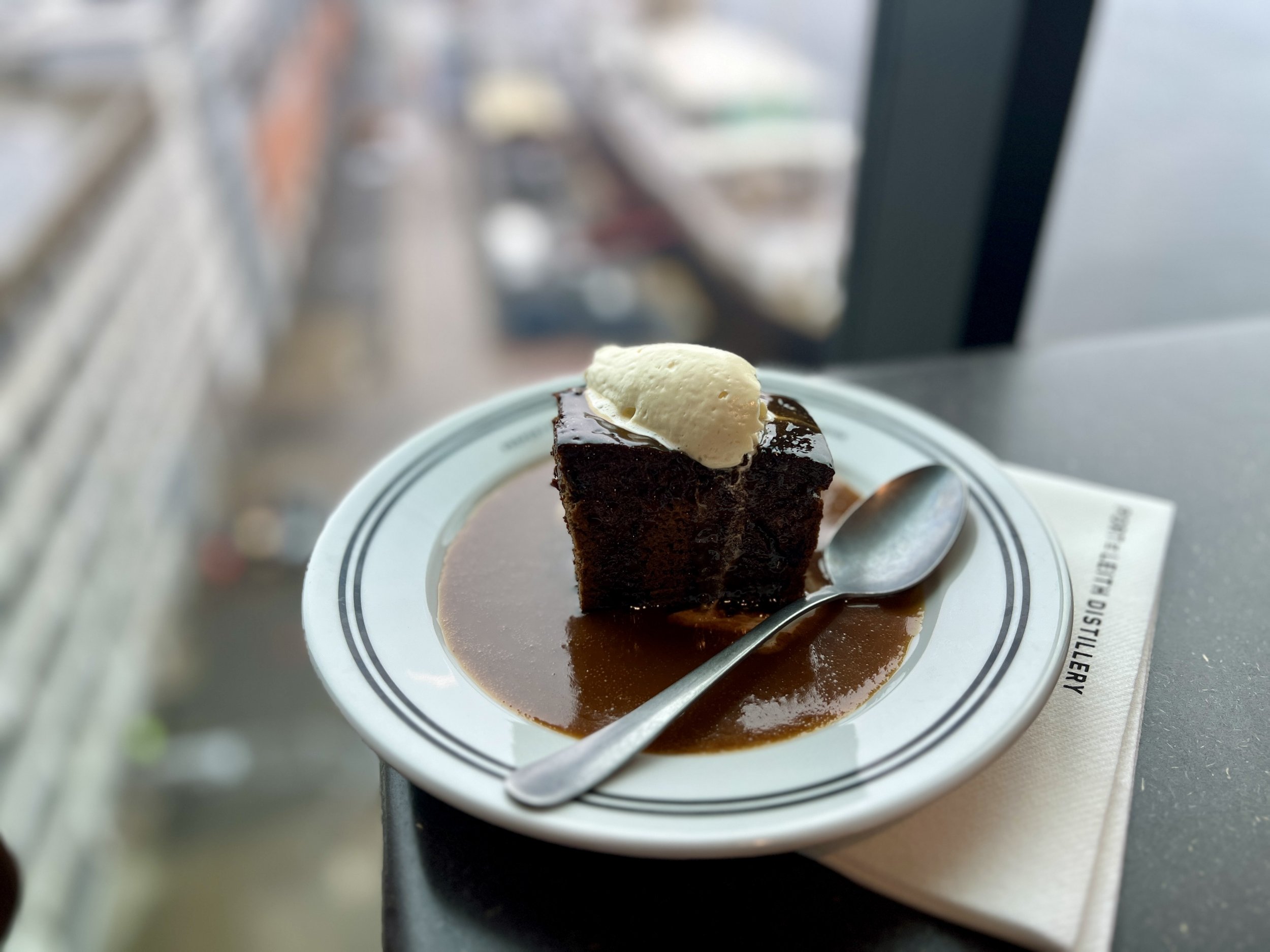
I dry off at a window seat eating a Scotch egg made with local smoked haddock instead of pork sausage. Then I polish off Scotland’s favourite dessert — sticky toffee pudding, topped here with tawny port toffee sauce and whipped cream.
The cocktail list is tempting — after all this distillery’s co-founders Ian Stirling and Paddy Fletcher also own Lind & Lime Gin. But I’ll save my drinking for the tour, which costs £26, lasts 90 minutes and ends with a guided tasting.

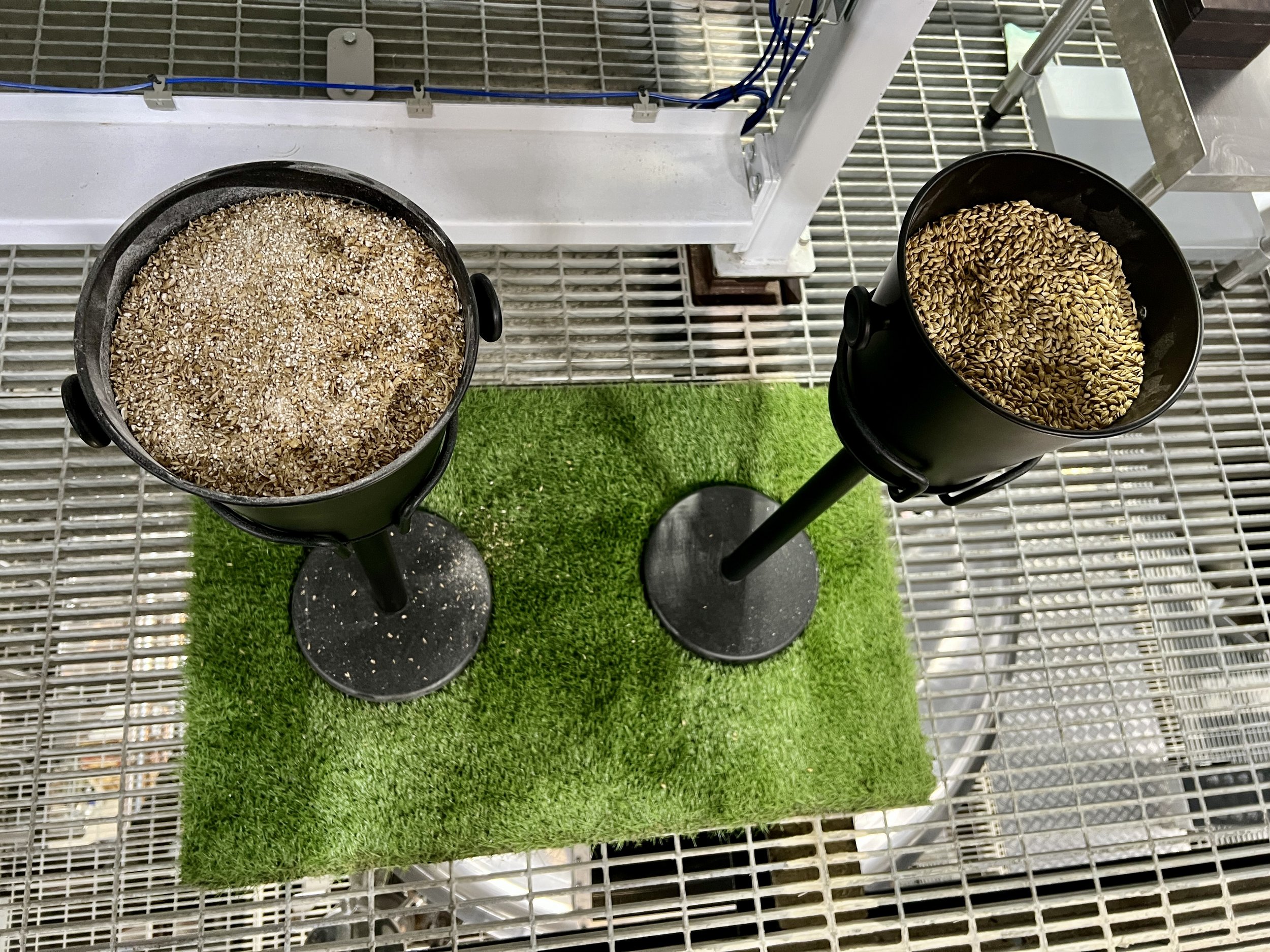
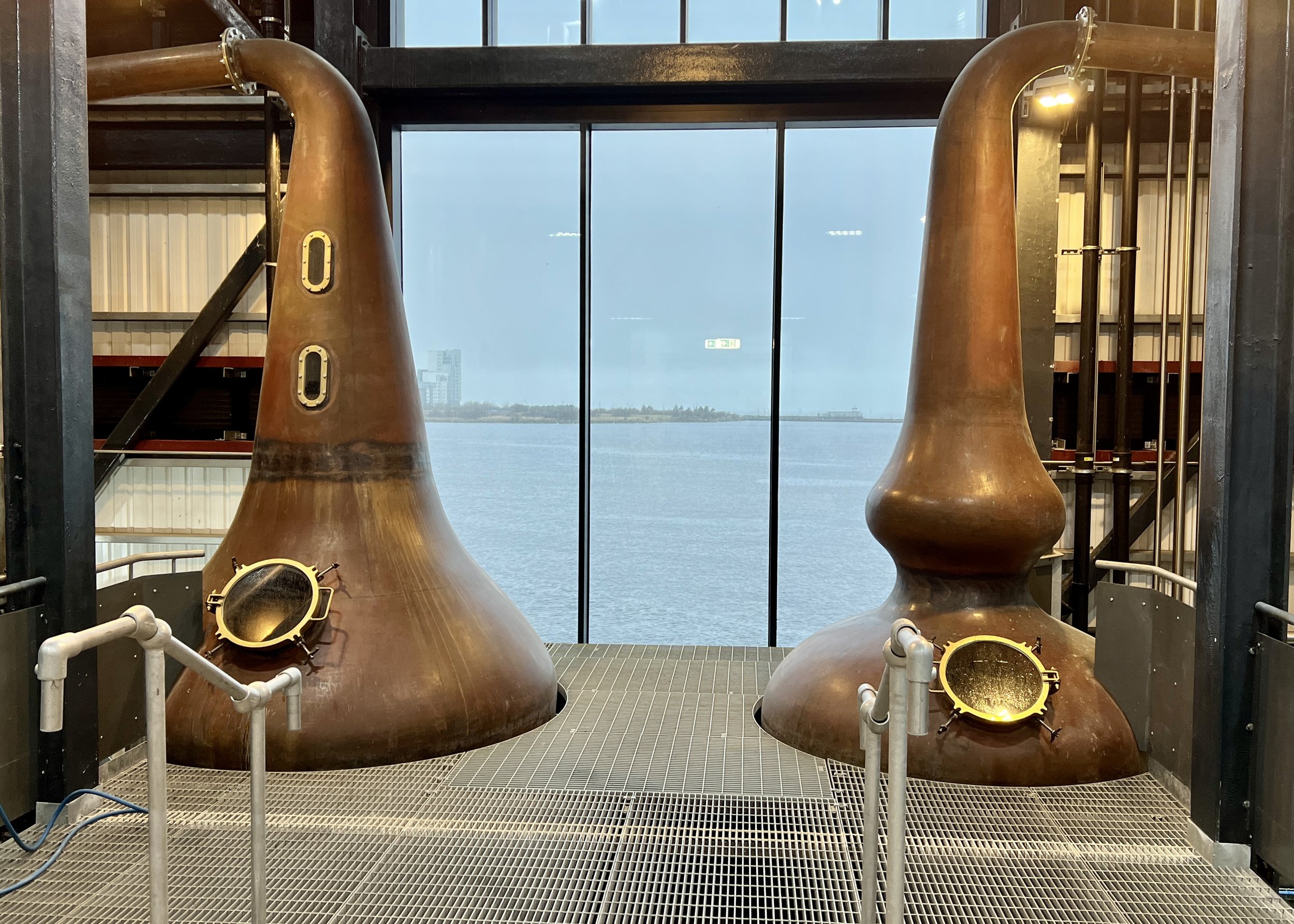
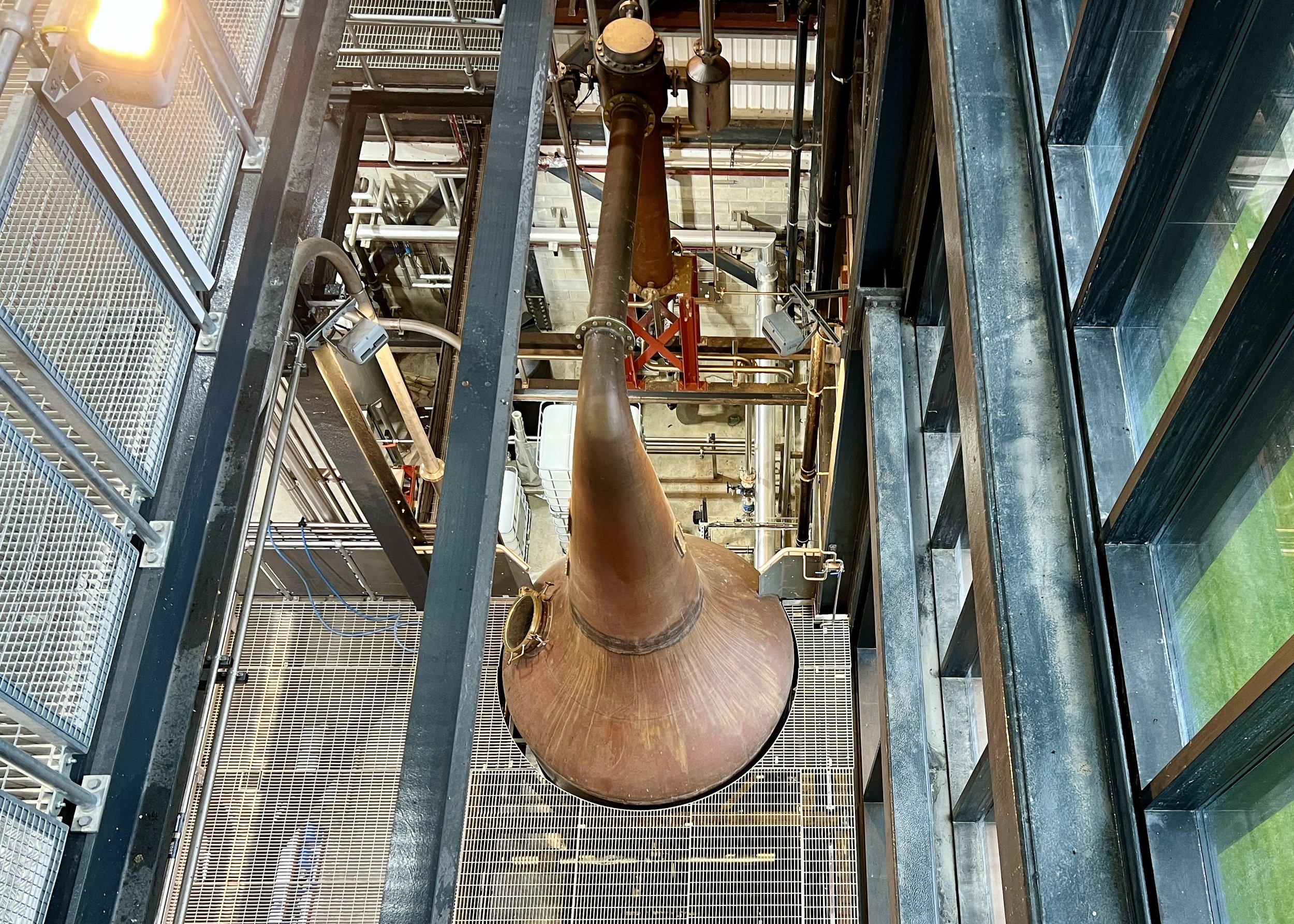
“Nobody has any vertigo, height concerns at all?” asks tour guide Isobel Irvine. “Look straight ahead and if anybody’s got an issue please just shout and I’m quite happy to come and hold your hand. Don’t worry — it’s just really the open-grate flooring that sometimes throws people a bit, which we need for the ventilation so it looks a bit odd.”
Tours start in the shop/reception area on the sixth floor. Then people walk down to the first floor where the copper stills are, stopping along the way to get the distillery’s origin story and learn about the production process. They get to take the elevator back to the fifth for the tasting and wrap up back in the sixth-floor shop. The ninth floor is a mezzanine level with seating and a private rental space that you walk to from the bar.
There’s one small catch to these tours. According to the Scotch Whisky Association, Scotch whisky is a distilled spirit made in Scotland from cereals, water and yeast that has been aged at least three years.
Port of Leith Distillery tasting
So instead of tasting Port of Leith Distillery single-malts — which don’t yet exist — we try some of the company’s other offerings. There are two versions of its “new make spirits,” a reserve tawny port (presumably used for sticky toffee puddings), an Oloroso sherry and a single-grain “table” whisky.
“We’ve had all kinds of descriptions of this from a leather motorbike seat to burning tires, raspberry pavlova, sherry trifle, everything,” says Irvine of the table whisky. “They wanted to go for something quite smooth and uncomplicated, and something you didn’t need to know a lot about whisky to enjoy it, really.”
“Tastes like a new-built flat,” one man offers.
“I’m keeping a list of all these descriptions because some of them are great,” Irvine replies.
Port Of Leith Distillery co-founders Paddy Fletcher and Ian Stirling CREDIT Sam Christie
I love hearing how the founders struggled to find an affordable Edinburgh location for their dream distillery, settled on this “odd little corner” in the Leith docks, and commissioned a vertical building to suit the small parcel of seaside land.
“We’re the tallest vertical distillery in the world,” says Irvine. “The only other one I know about is in Sweden (Mackmyra Gravity Distillery). It’s about an hour and a half north of Stockholm and it’s five metres short of us.”
Port of Leith Distillery exterior
This, she concludes, “in a nutshell is how we’ve come to be here and we’re starting out our brewing life in a tiny corner of Leith docks, which might seem a bit odd but kind of historically Leith has been really important for the import of wines and spirits.”
Invisible Cities tour guide Dakota Jones by the Scottish Merchant Navy Memorial
That’s something I delve into on a tour called “The Alternative Story of Leith” led by Dakota Jones from Invisible Cities. The social enterprise trains people affected by homelessness to
create, craft and deliver walking tours.
Jones, 29 and originally from Mississauga, Ontario, experienced homelessness while living in Berlin and during a recent breakup in Edinburgh. This tour costs £15, lasts up to 90 minutes and promises lesser-known and less politically correct stories of Leith.
“This is one of my favourite tours,” enthuses Jones from under an umbrella as we meet at the Scottish Merchant Navy Memorial. “Edinburgh has the Royal Mile, which is like Disneyland for tourists, whereas Leith is a little bit more authentic.”
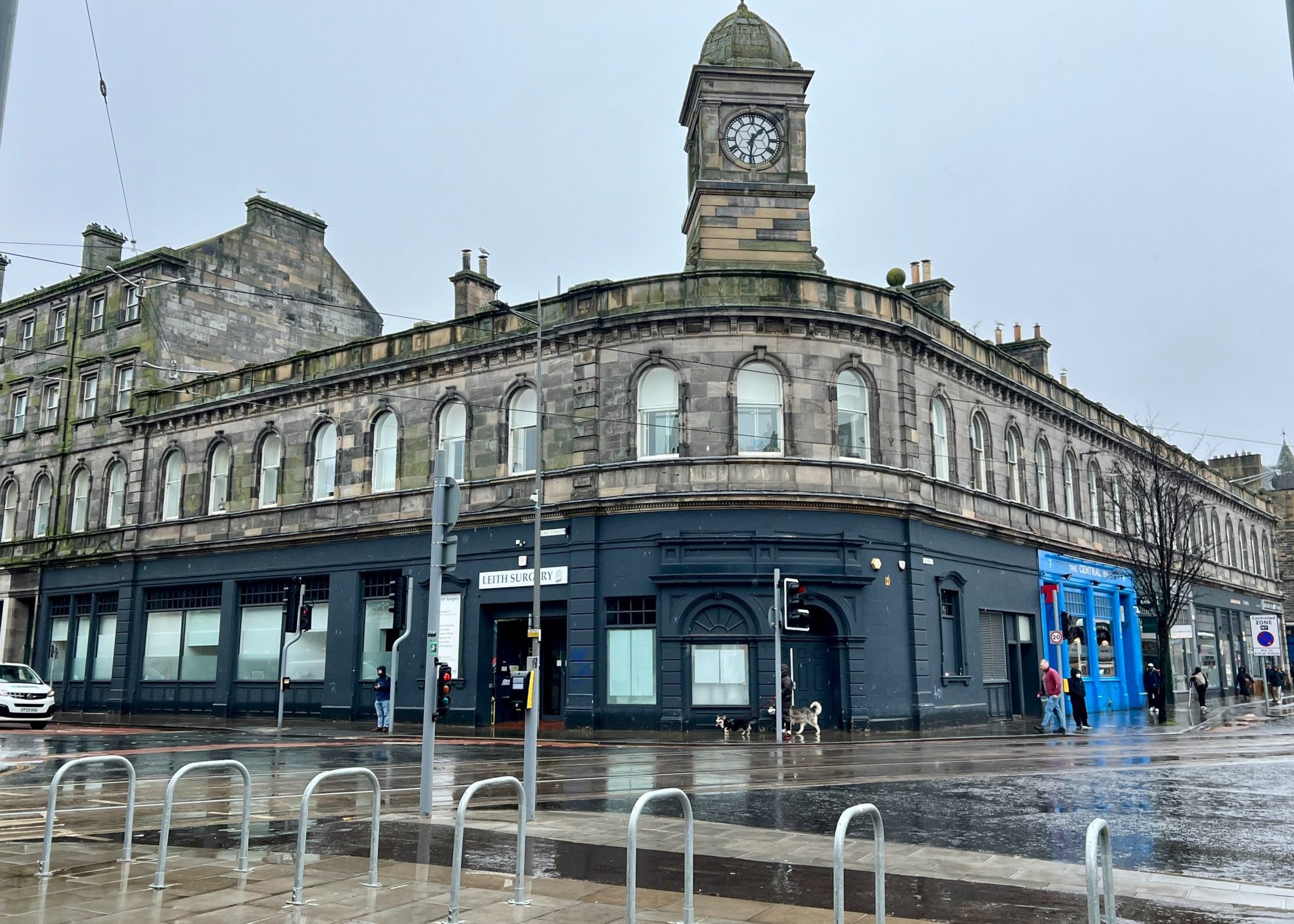
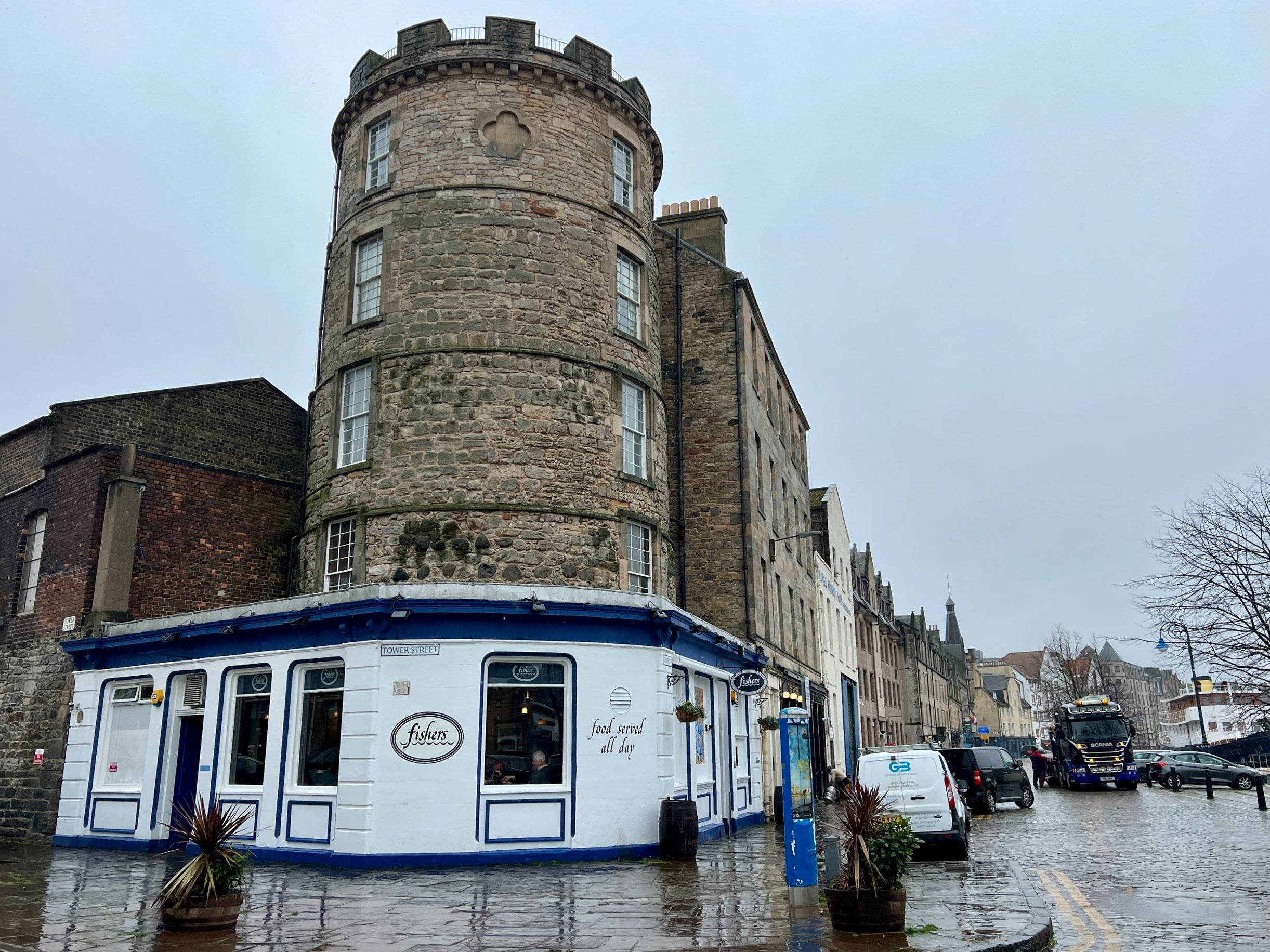
I hear about Leith’s time as the port of Edinburgh, its brothel and white-collar eras, and its three Michelin-starred restaurants. We admire a signal tower from the 1680s that’s perched above the Fishers restaurant, and talk about “Sunshine on Leith,” the 1988 song by Scottish folk rock duo the Proclaimers. Of course we look at the now-shuttered railway station that inspired Scottish novelist Irvine Welsh’s Trainspotting novel and the hit film that followed.
“A lot of people complain about Leith becoming gentrified and all that,” says Jones, “but as you’ll see over the course of the tour, Leith has always been changing quite drastically but it has always stayed Leith.”
It’s my first time in Leith, or Scotland for that matter, so I’ll take their word for it.
Cairn Distillery near Grantown-on-Spey in Cairngorms National Park
I’ve come to explore Cairngorms National Park in March on a scenic walking trip with Wilderness Scotland before hitting up Glasgow and Edinburgh. The walks focus on winter wildlife spotting, but we pop into the Cairn Distillery, which isn’t vertical but is newly built and bills itself as “a modern home for the ancient craft of whisky making.”
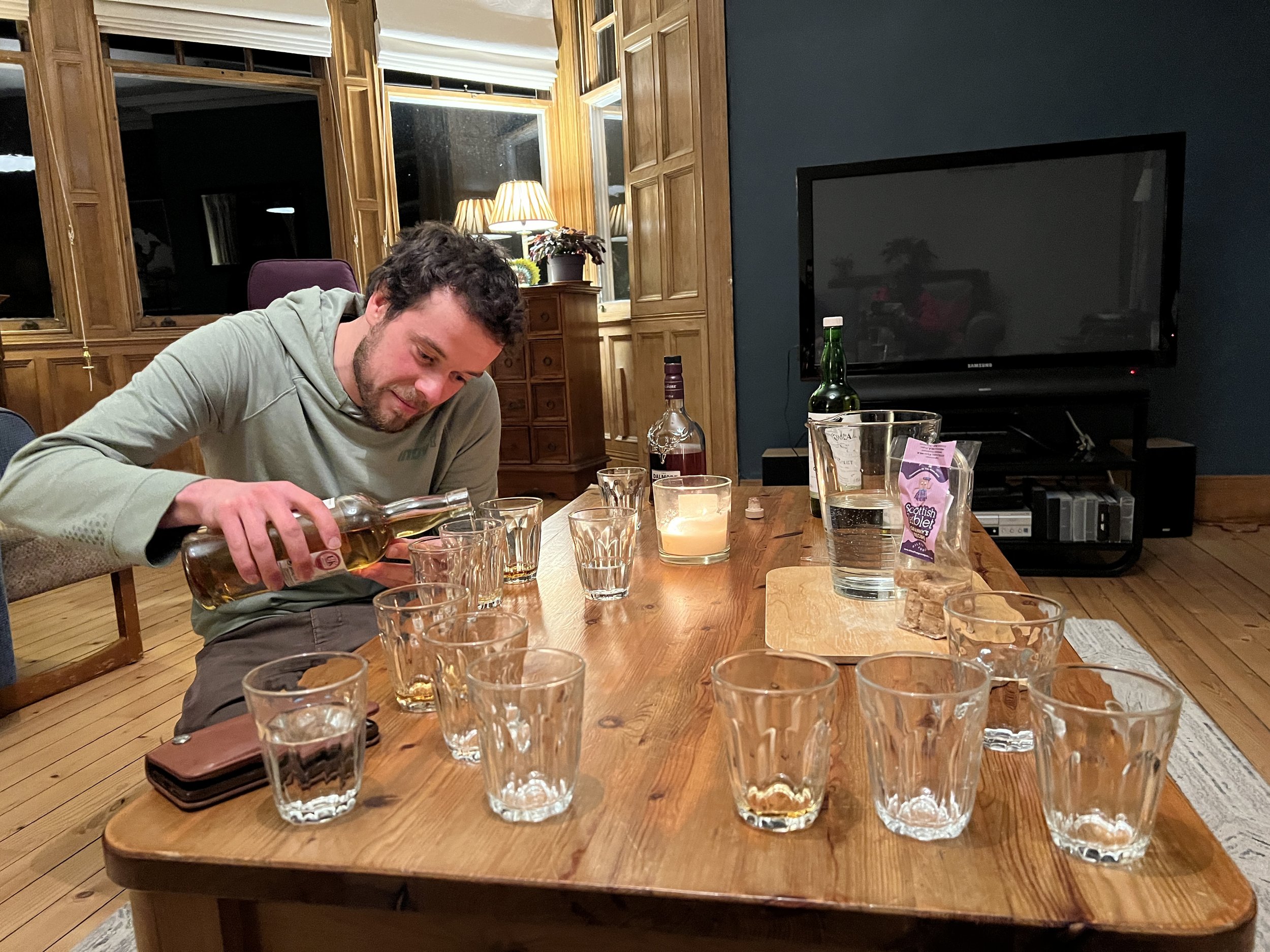
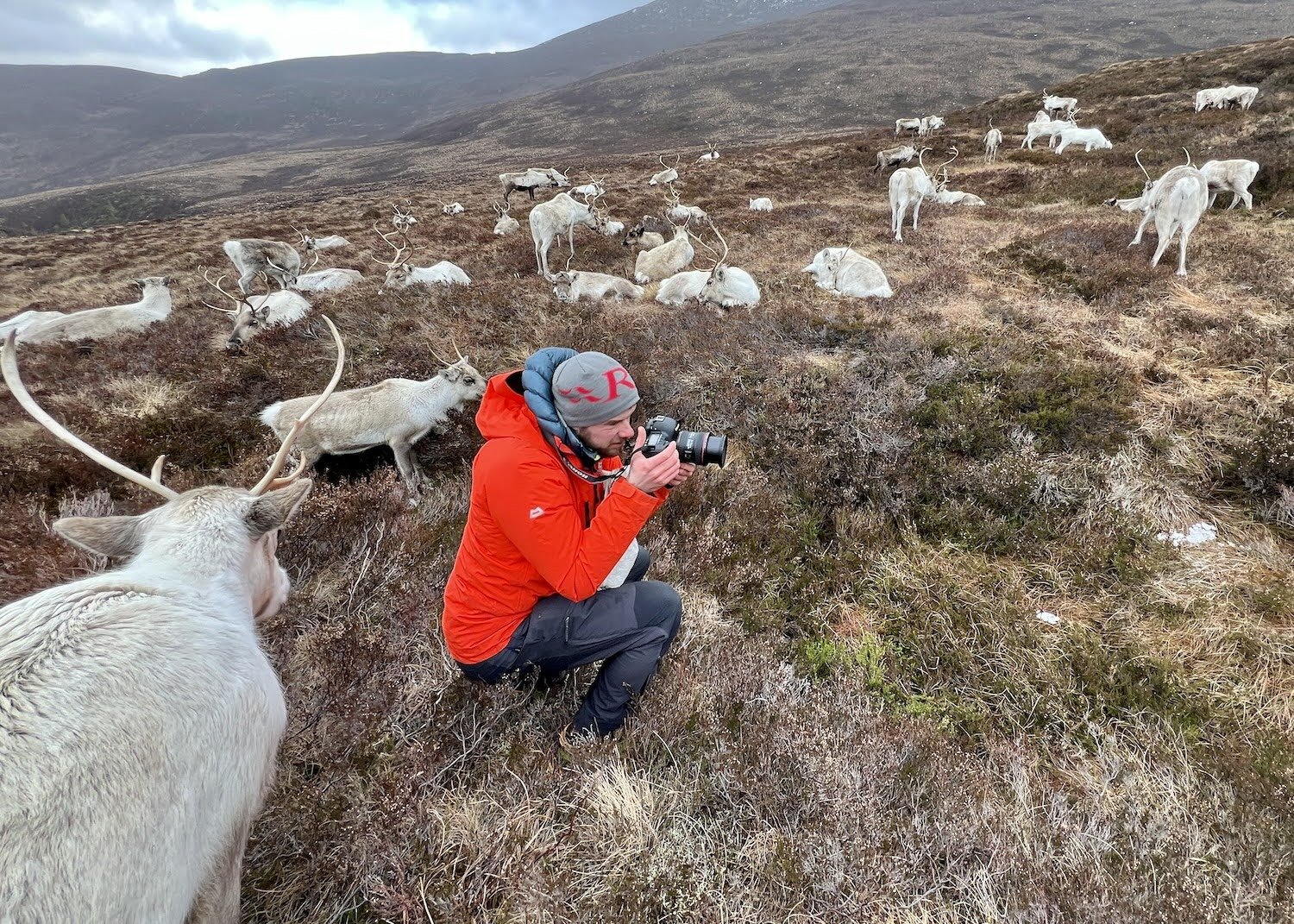
On the last night of the small group trip, guide Joe Mann (who doubles as a reindeer herder and takes us to meet the Cairngorm Reindeer Herd) brings out three Scottish whiskies from his personal collection after dinner at the Coig na Shee guest house in Newtonmore.
Mann leads the most relaxed and pleasurable tasting I’ve ever had, sweetened with nibbles of a fudge-like candy called Scottish tablet.
There’s no escaping whisky in this country.
Edinburgh Waverley Station
After two nights in Glasgow, I take a 50-minute ScotRail train ride to Edinburgh and check into Angels Share Hotel, Bar & Restaurant. Named for the small amount of alcohol that evaporates out of whisky barrels during maturation, it’s steps from Johnnie Walker Princes Street where multimedia tours pair live performances and light shows with tastings.
But since I usually prefer to eat my calories, it’s off to Bonnie & Wild’s Scottish Marketplace in the St. James Quarter shopping centre for lunch.
Lankan Tatties Hopper at Kochchi in the Bonnie & Wild Scottish Marketplace
It’s here in the city’s first food hall that I tuck into Sri Lankan street food at Kochchi, ordering the Lankan Tatties Hopper. Roasted potatoes come “Sri Lankan style” with coconut sambal and spiced caramelized onions inside a bowl-shaped, savoury crêpe made from fermented rice flour and coconut milk.
Next I duck into Black Sheep Coffee across from Edinburgh Waverley railway station for a turmeric latte to take on a hop-on, hop-off bus that leaves from nearby Waterloo Place.
A view of Edinburgh from the City Sightseeing hop-on hop-off bus
Edinburgh is small — 560,000 people to Glasgow’s 1.7 million — so it’s no surprise that City Sightseeing’s hour-long red bus loop is also shorter with just 14 stops. A blue loop goes to Ocean Terminal in Leith.
Still, it’s nice to relax on the sheltered front half of the upper level and drink in the medieval Old Town. Edinburgh Castle looms over the city and the “Royal Mile” clutch of tourist-choked streets is just as Jones described.
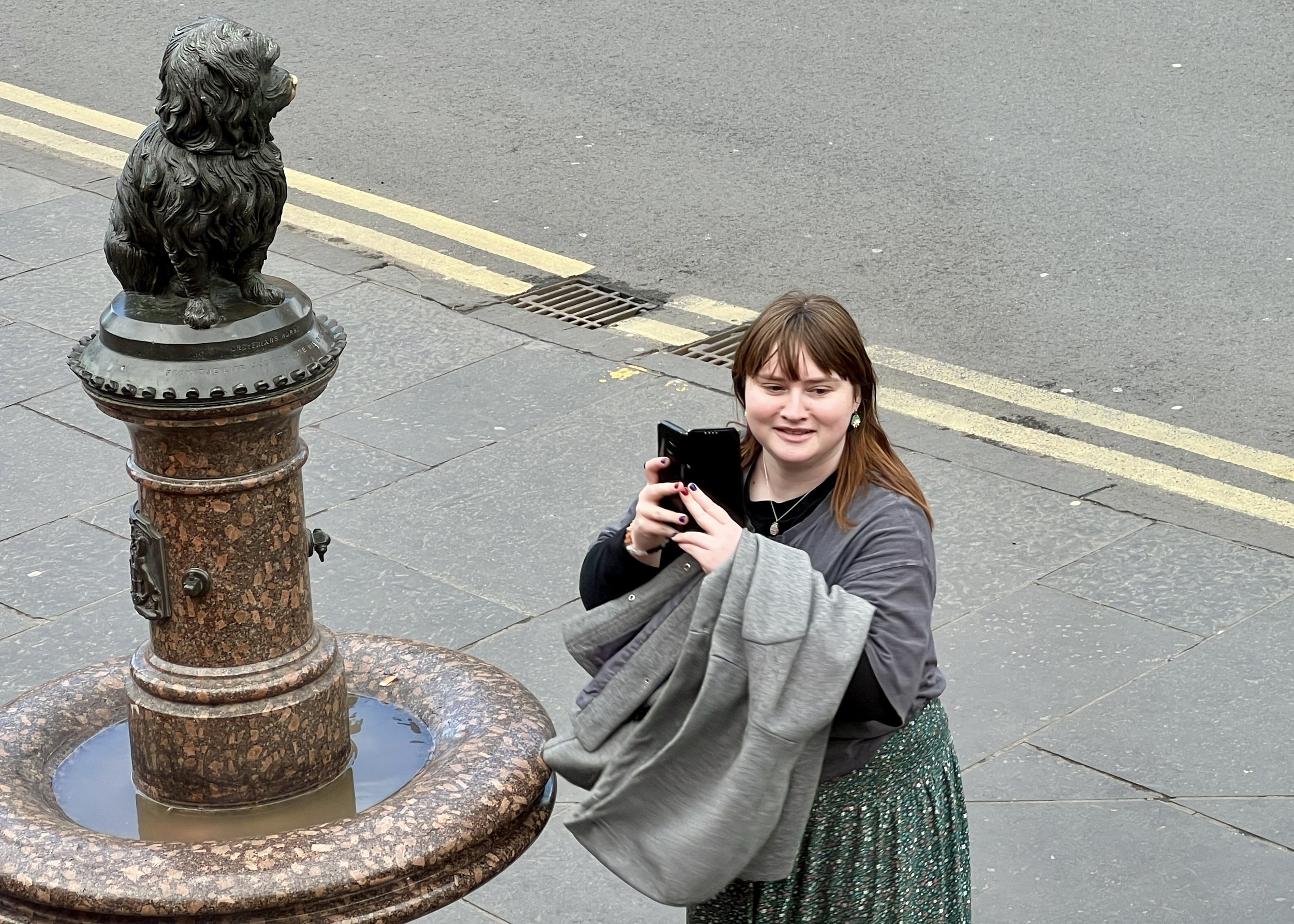
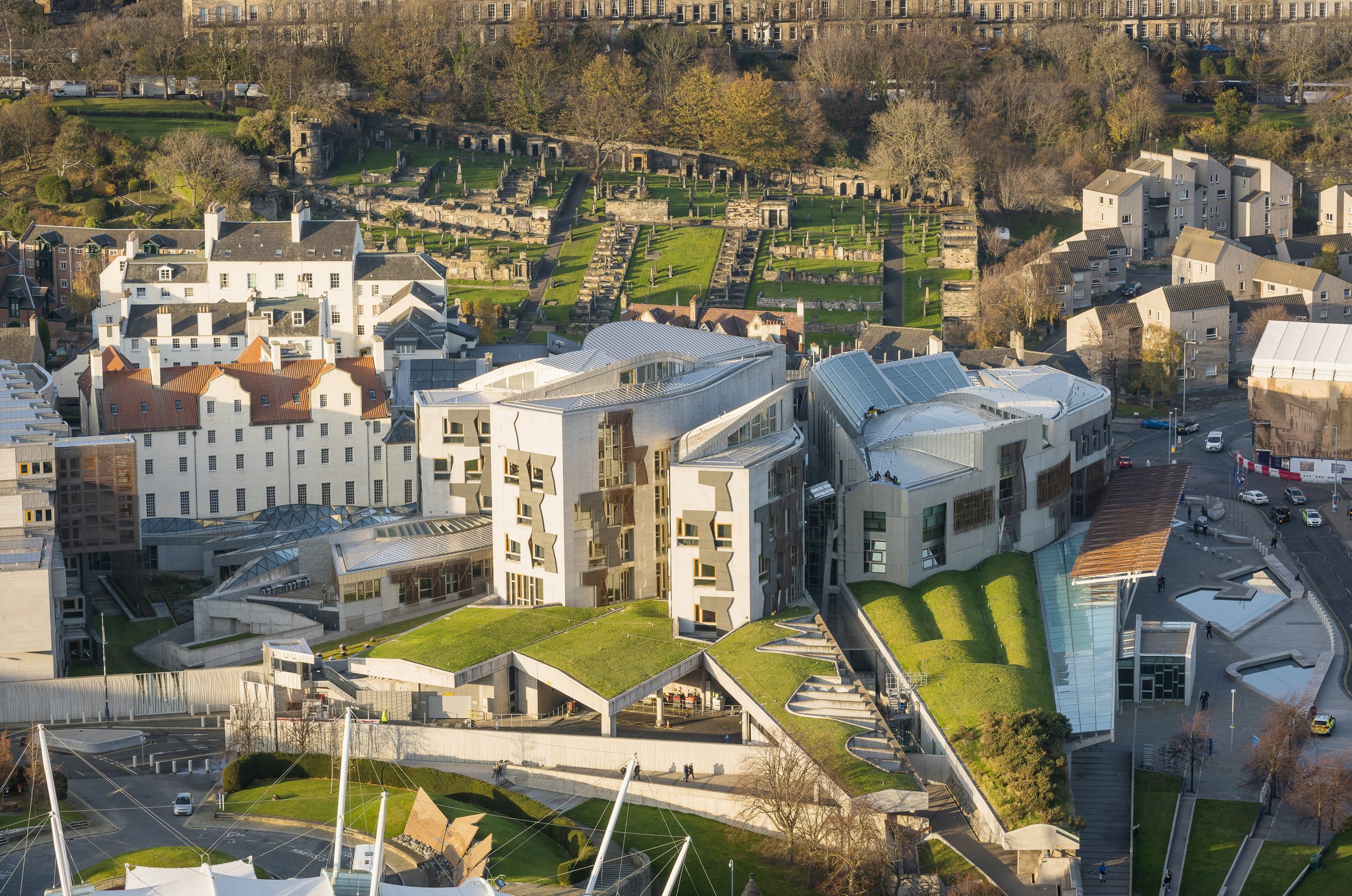
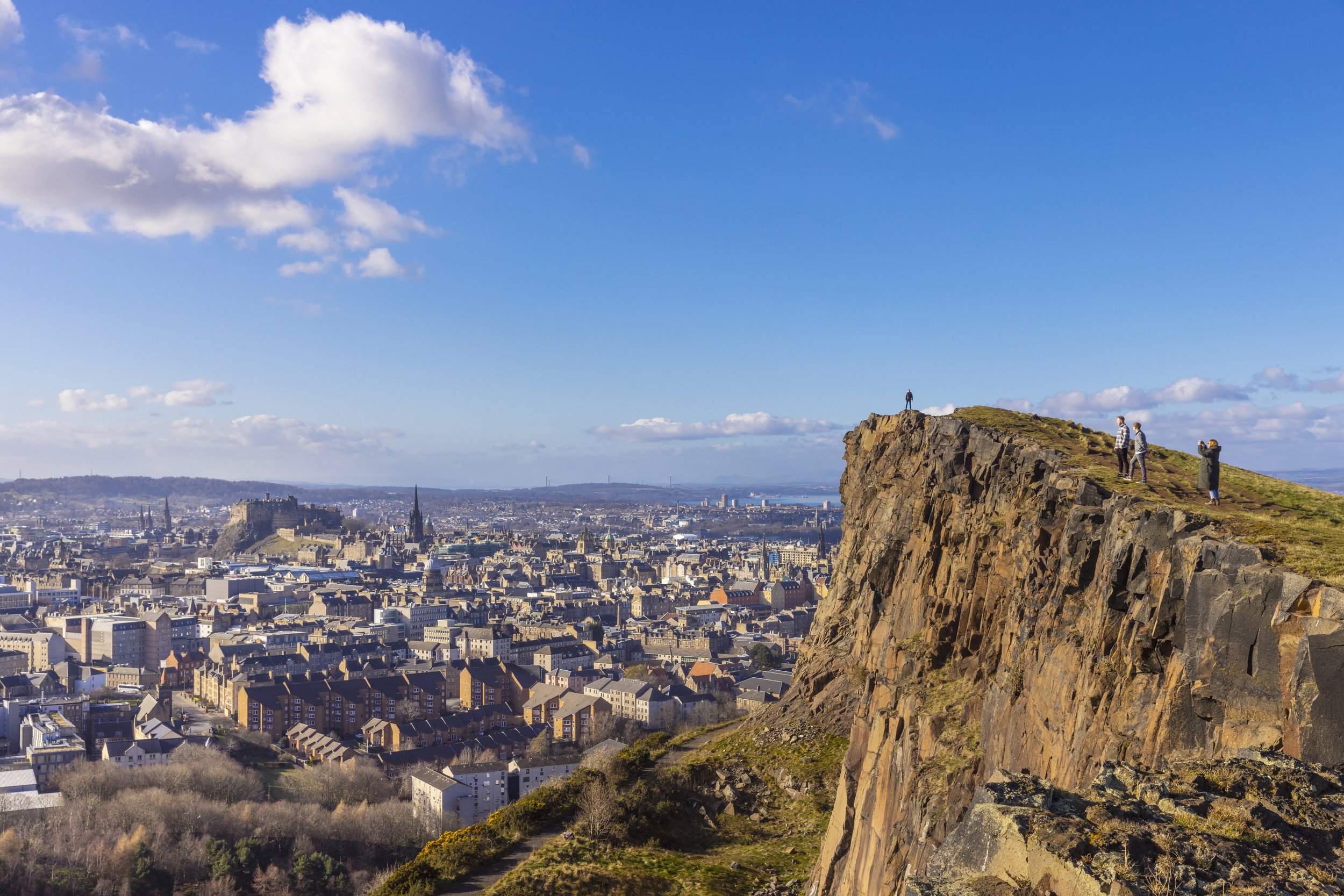
The famous Greyfriars Bobby statue — honouring a Skye Terrier that guarded his beloved owner’s grave for 14 years — is surprisingly tiny and unsurprisingly draws a lineup of people waiting for selfies.
In front of Holyrood Park and Salisbury Crags (a series of cliffs), I’m impressed by Scotland’s Parliament. Spanish architect Enric Miralles wanted the steel, oak and granite building to look like it’s “growing out of the land.”
My only regret? It’s raining and I don’t feel like hopping off here as planned to climb Arthur’s Seat, an ancient volcano with sweeping views in the park and notable city landmark.

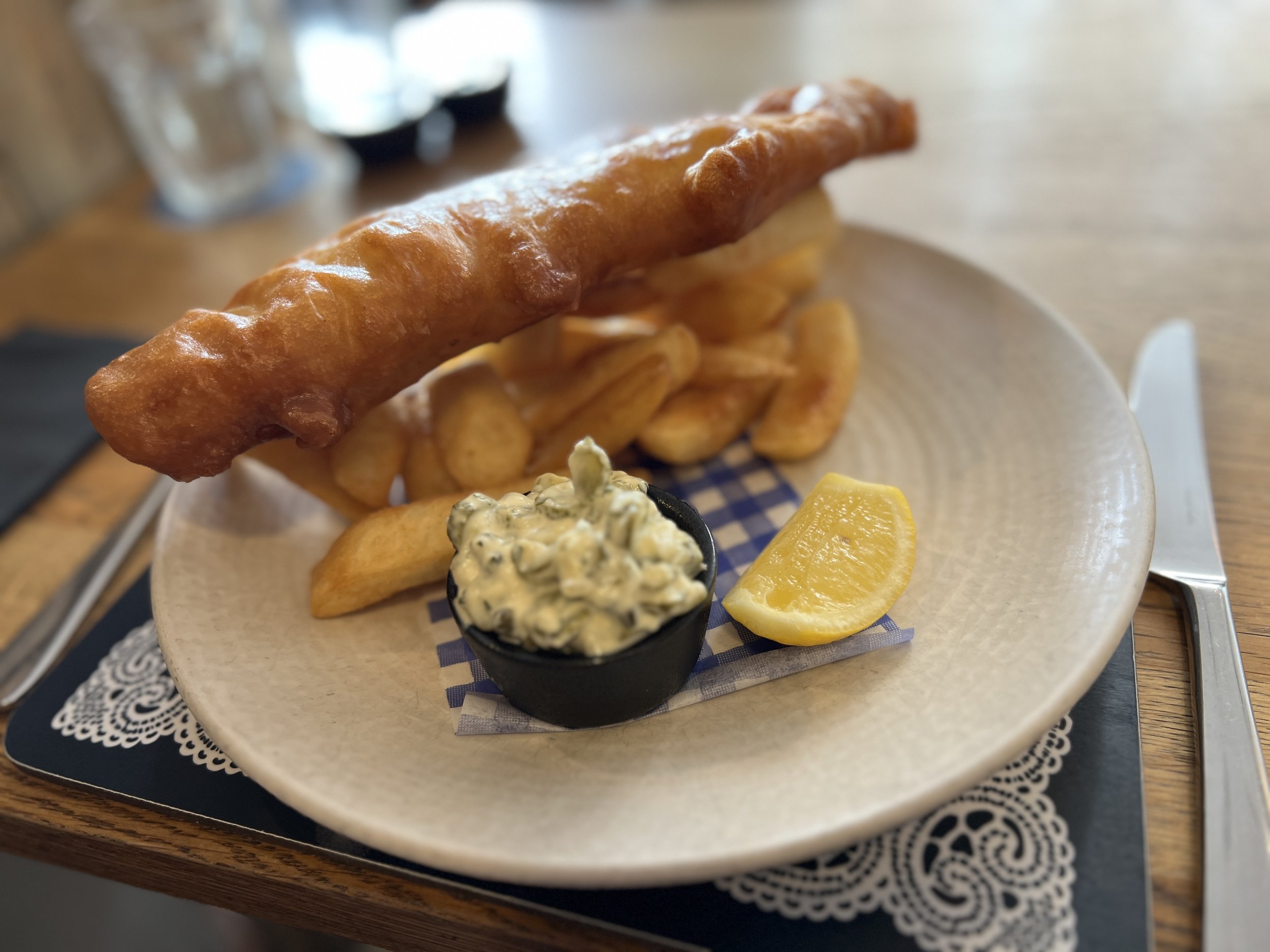
With only two nights and just 36-odd hours in Edinburgh, I have to prioritize and so head to the trendy Stockbridge neighbourhood. It’s home to the Rare Birds Book Shop, charity shops (thrift shops), cafes, coffeeshops and the restaurant where I have a final feast.
Scotland’s leading gastropub, Scran & Scallie, has a Michelin Guide Bib Gourmand rating that “recognizes friendly establishments that serve good food at moderate prices.” It feels like the right place to finally treat myself to fish and chips, in this case haddock served with chunky tartar sauce.

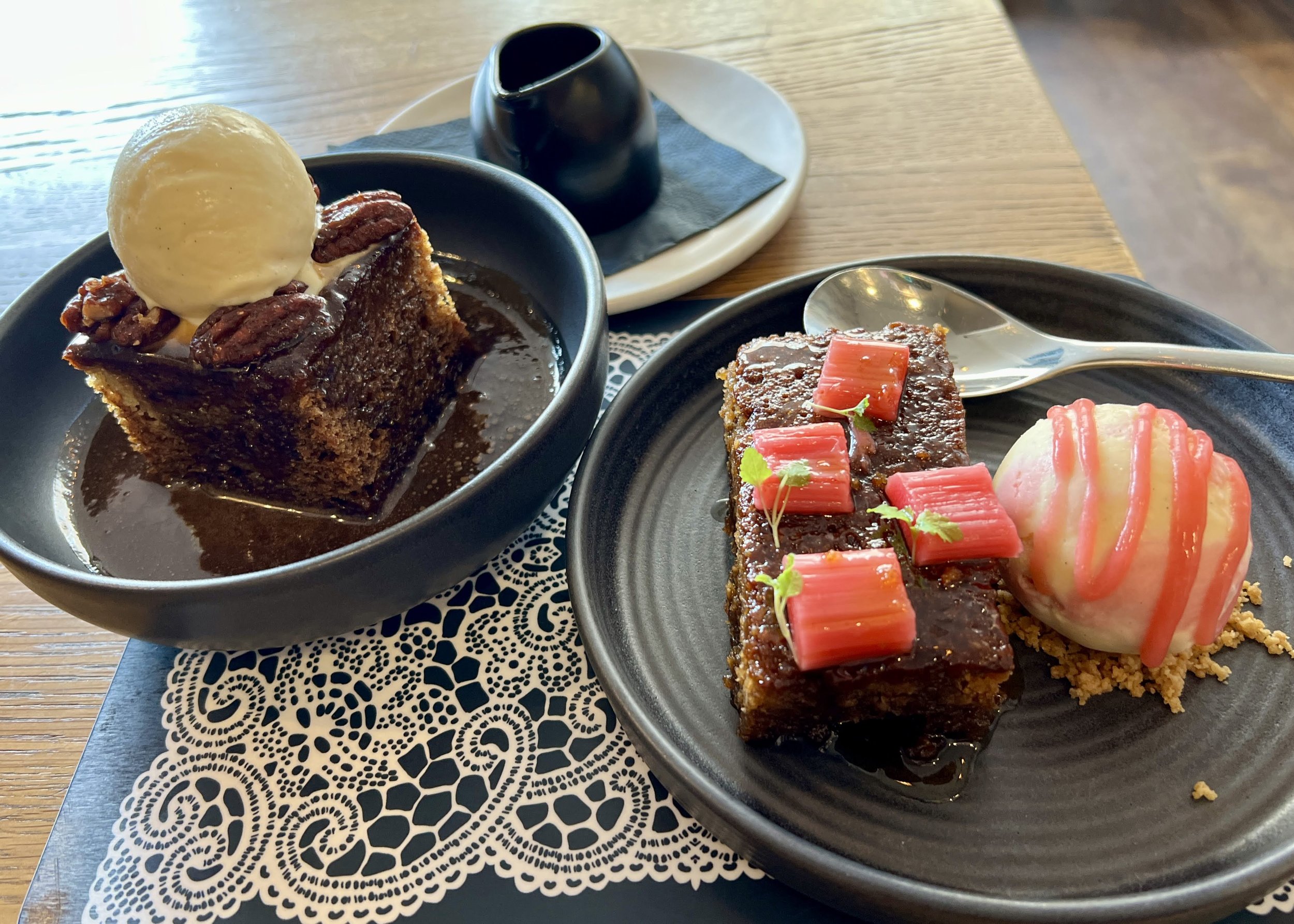
For dessert, I binge on a final sticky toffee pudding (a Scottish favourite), but also the ginger parkin the chef wants me to try. This old-school British cake celebrates oats and is gussied up with an oat crumble, poached rhubarb, rhubarb purée, lemon balm and rhubarb ripple ice cream.
It’s a delicious ending to a short, wet whirl through Scotland’s capital.
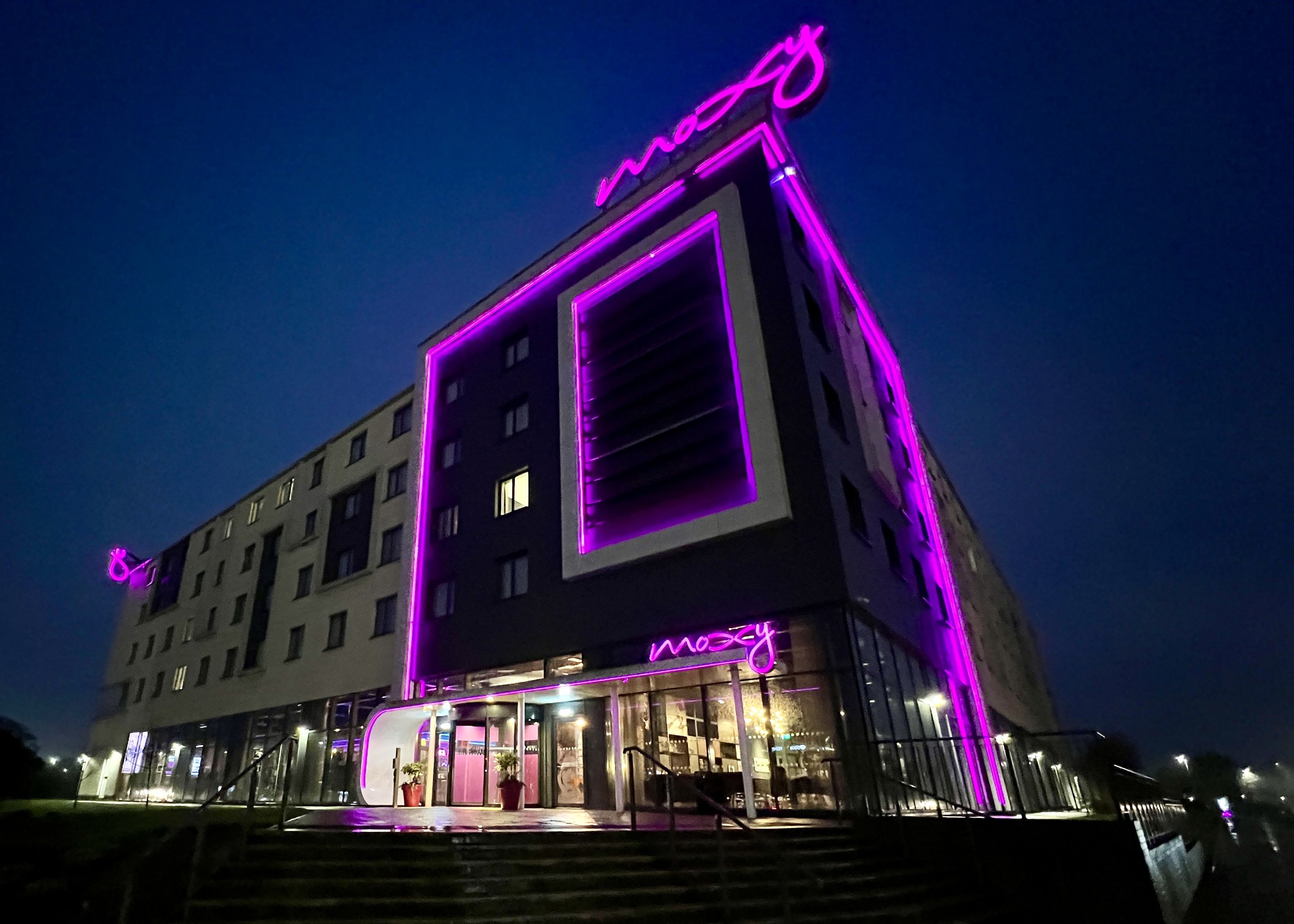
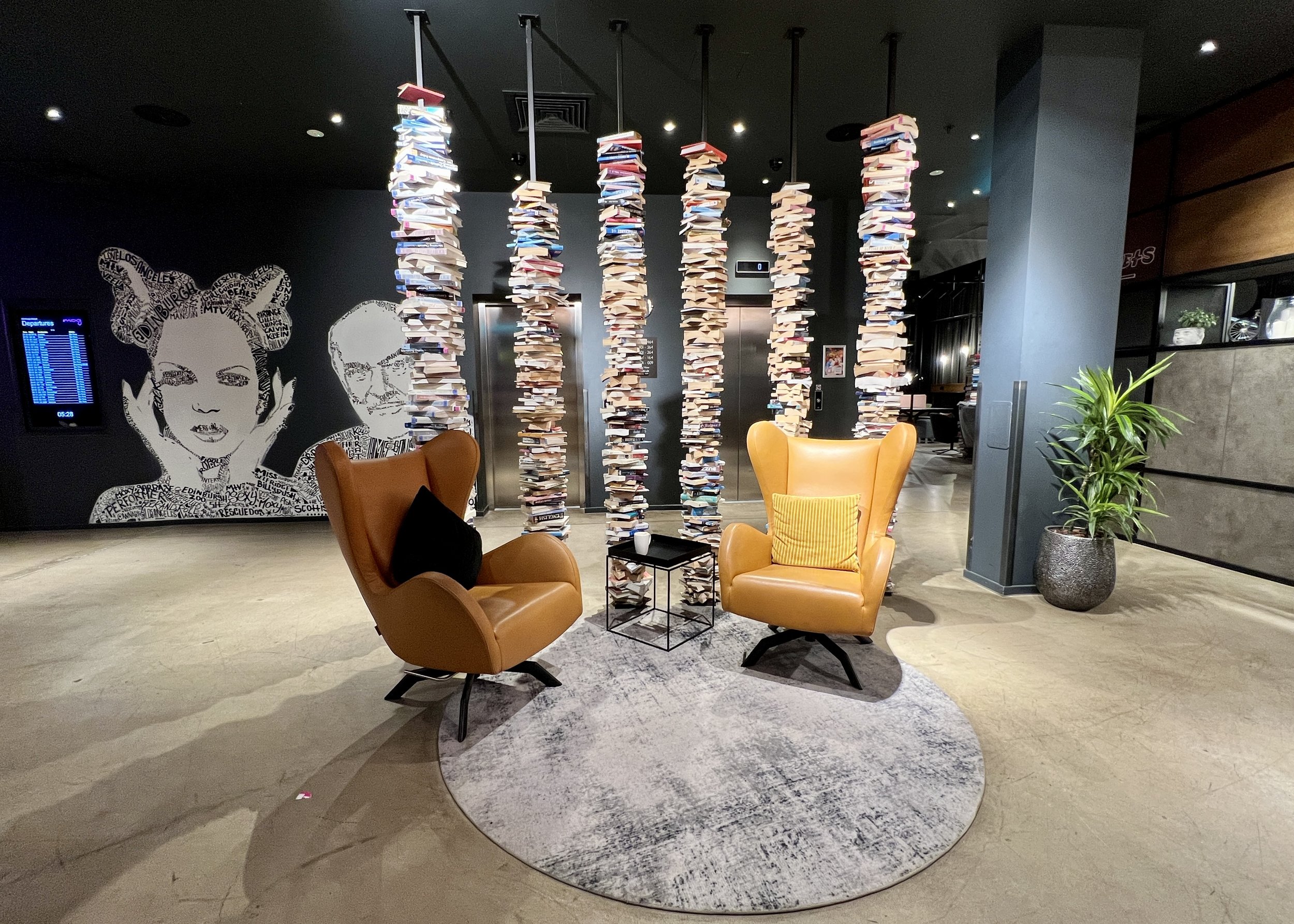
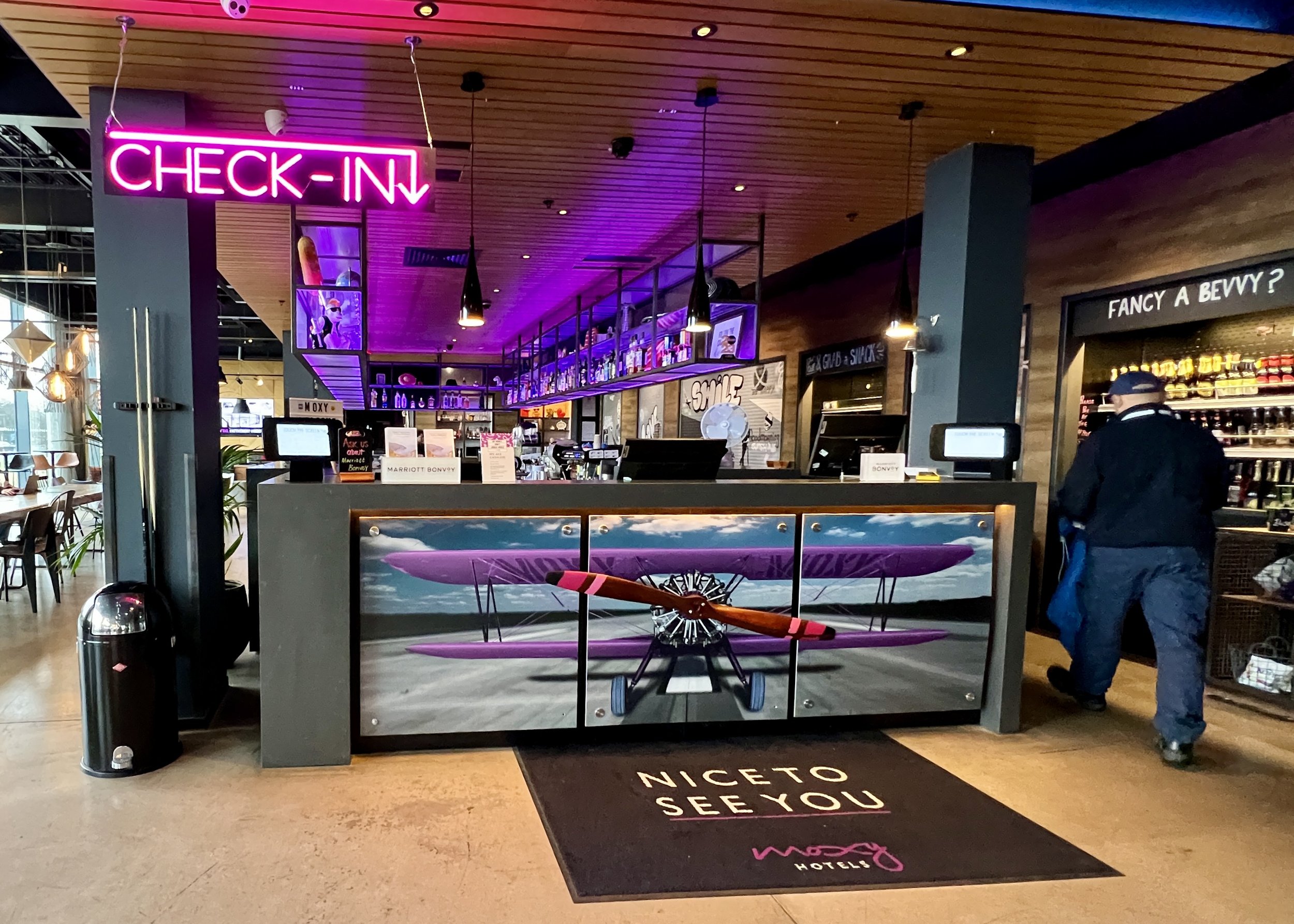
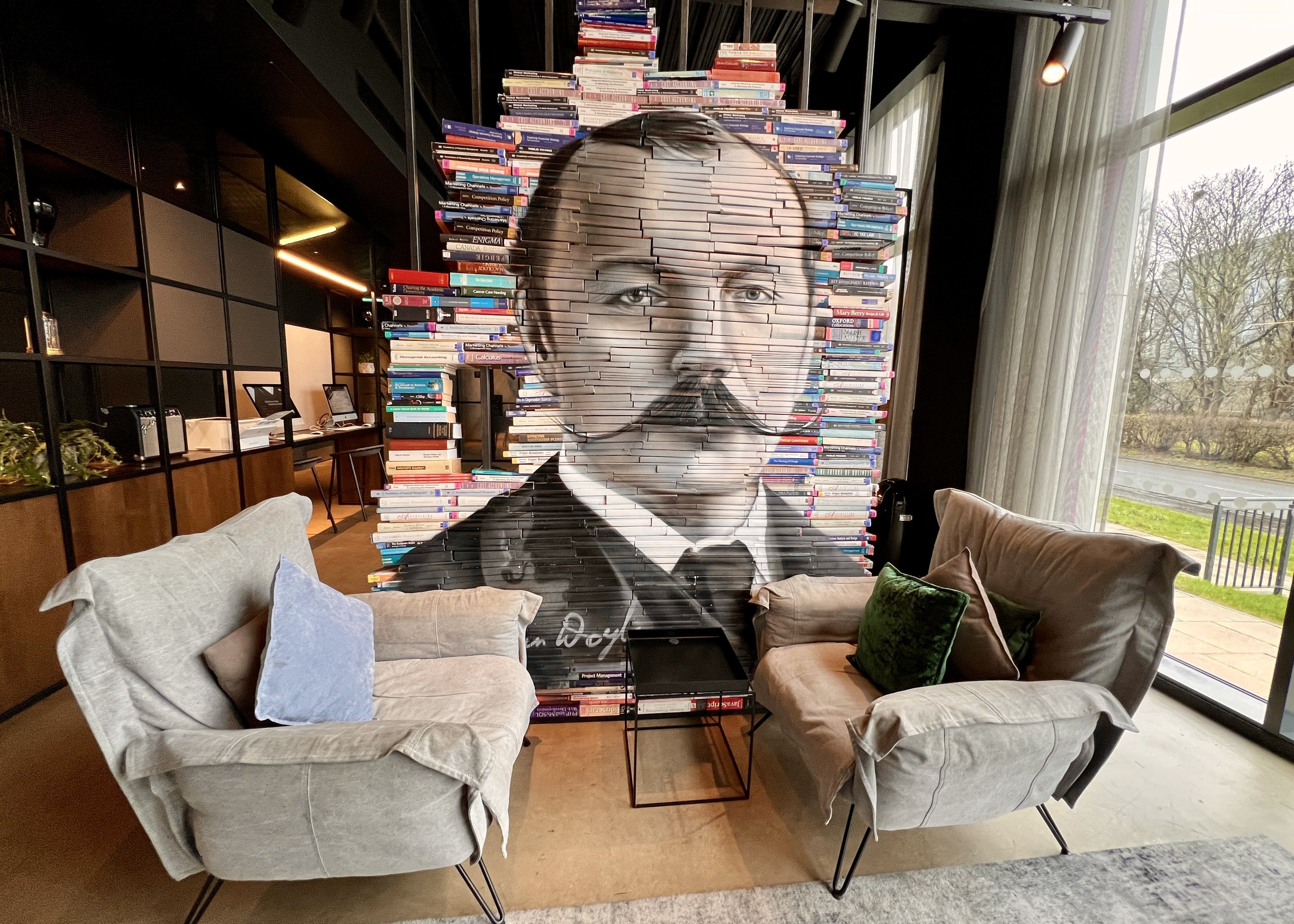
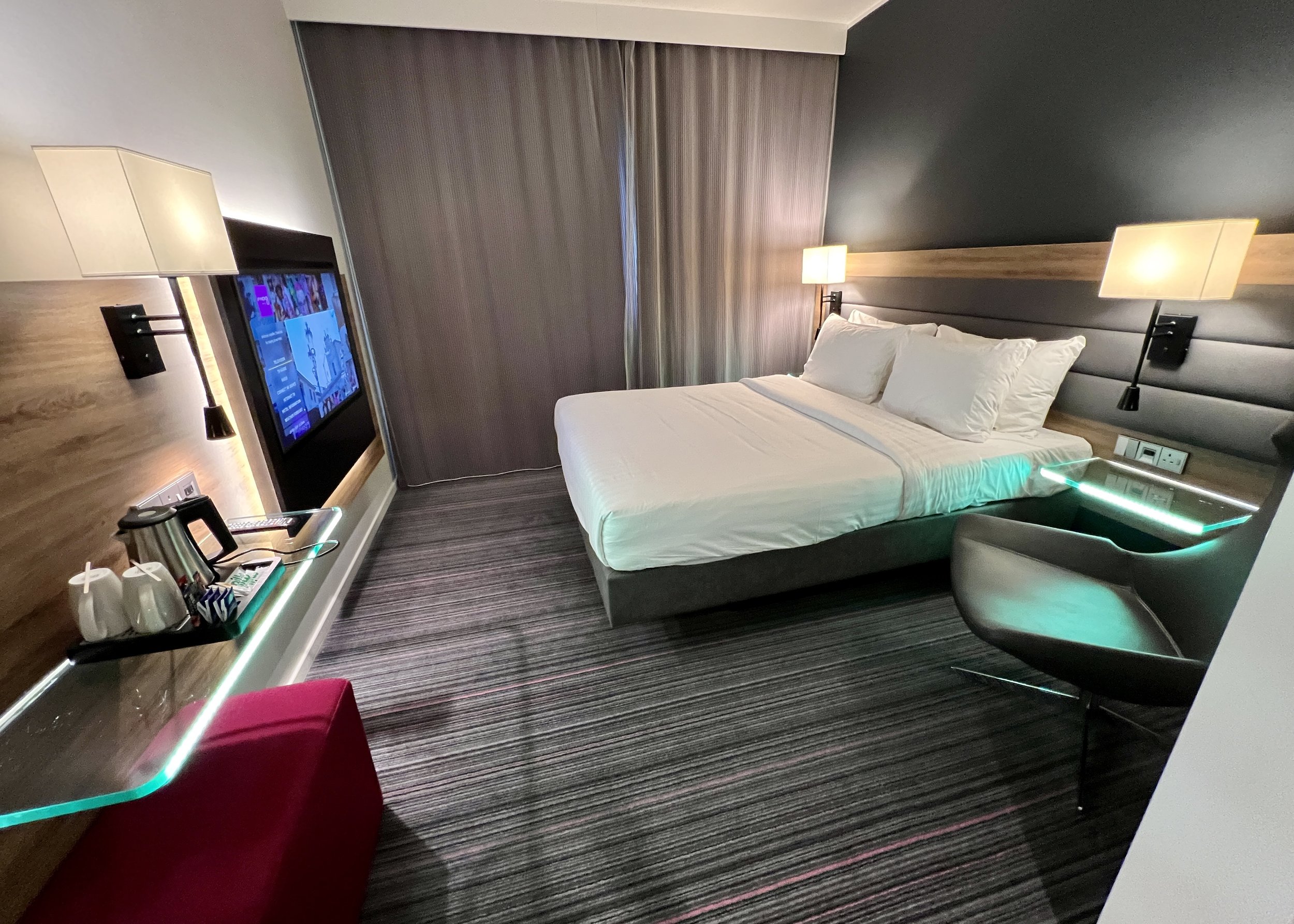
Actually, I have one final word of praise for Edinburgh — the airport buses are fast and cheap. The Airlink 100 whisks me to the city centre when I first arrive from Toronto to head north for my wilderness hike. The Skylink 200 transports me from Leith’s Ocean Terminal to the Moxy Edinburgh Airport on my last night.
Marriott’s affordable boutique brand has a bar that doubles as a check-in and a book-themed lobby to remind us that Edinburgh is a UNESCO City of Literature. The Moxy is aimed at “fun-hunter guests” like me.
Dashing towards the five-storey hotel in the rain, I can’t help but feel warmly welcomed — just like at the Port of Leith Distillery — by a splash of neon, this time the pink-purple trim on the playful building’s façade.
Jennifer Bain
After a career at daily newspapers, Jennifer began travelling the world in search of quirk in 2018. She goes wherever the story is, but has a soft spot for Canada and has been to all 10 provinces and all three territories. Jennifer has won multiple awards and written two cookbooks and three travel books. She lives in Toronto but has a vacation house on Fogo Island, Newfoundland, which some cheekily say is one of the four corners of the supposedly flat earth.





